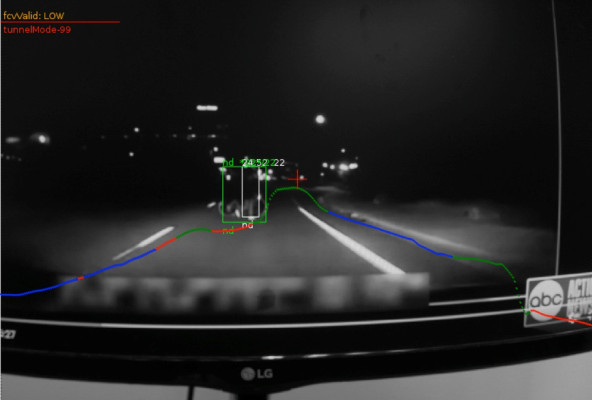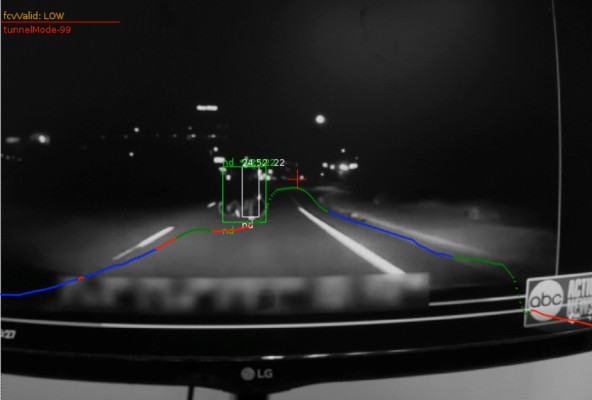
A self-driving vehicle fatally striking a pedestrian is a tasteless venue for self-promotion, but it’s also an important time to discuss the problems that created the situation. Mobileye CEO and CTO Amnon Shashua seems to do a little of both in this post at parent company Intel’s blog, running the company’s computer vision software on Uber’s in-car footage and detecting the person a full second before impact.
It first must be said that this shouldn’t be taken to demonstrate the superiority of Mobileye’s systems or anything like that. This type of grainy footage isn’t what self-driving — or even “advanced driver assistance” — systems are meant to operate on. It’s largely an academic demonstration.
But the application of a competent computer vision system to the footage and its immediate success at detecting both Elaine Herzberg and her bike show how completely the Uber system must have failed.
Even if this Mobileye object detection algorithm had been the only thing running in that situation, it detected Herzberg a second before impact (on highly degraded data at that). If the brakes had been immediately applied, the car may have slowed enough that the impact might not have been fatal; even a 5 MPH difference might matter. Remember, the Uber car reportedly didn’t even touch the brakes until afterwards. It’s exactly these types of situations in which we are supposed to be able to rely on the superior sensing and reaction time of an AI.
We’re still waiting to hear what exactly happened that the Uber car, equipped with radar, lidar, multiple optical cameras, and a safety driver, any one of which should have detected Herzberg, completely failed to do so. Or if it did, failed to take action.
This little exhibition by Mobileye, while it should be taken with a grain of salt, at least gives a hint at what should have been happening inside that car’s brain.




 Let life surprise you with goodness!
Let life surprise you with goodness! by @marketingmuses
by @marketingmuses  marketingmuses.com
marketingmuses.com 

